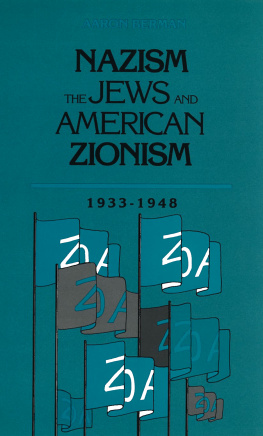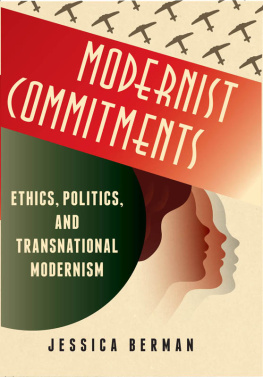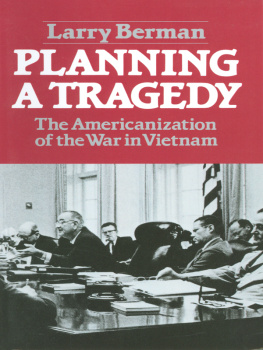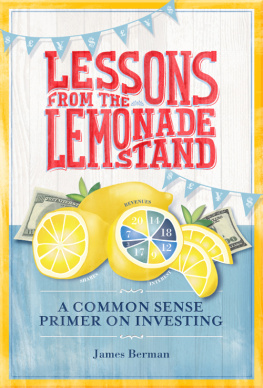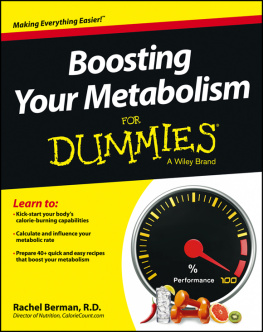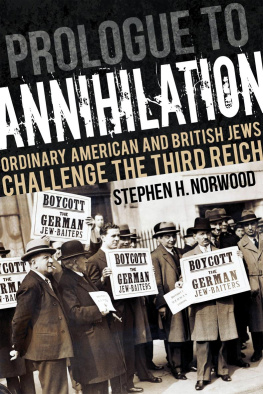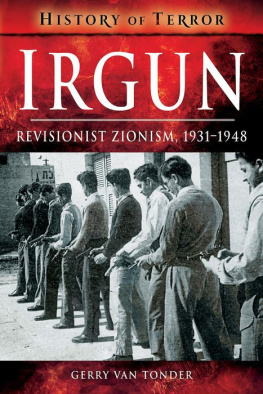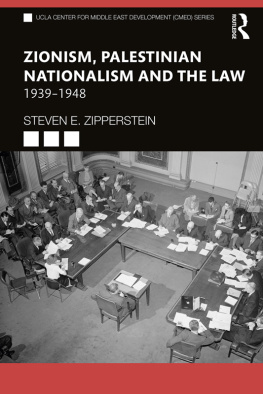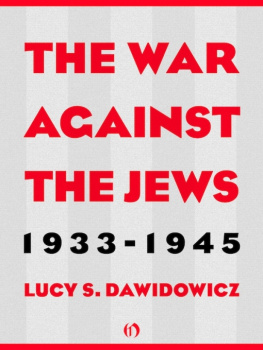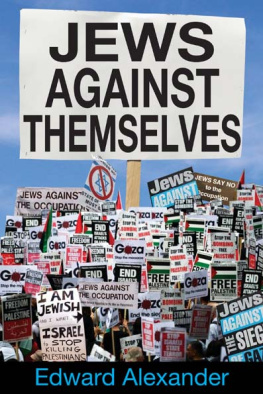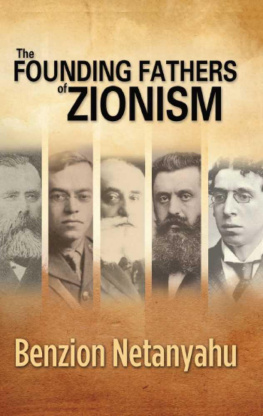Berman - Nazism, The Jews and American Zionism, 1933-1948
Here you can read online Berman - Nazism, The Jews and American Zionism, 1933-1948 full text of the book (entire story) in english for free. Download pdf and epub, get meaning, cover and reviews about this ebook. City: United States, year: 2018;2017, publisher: Wayne State University Press, genre: Politics. Description of the work, (preface) as well as reviews are available. Best literature library LitArk.com created for fans of good reading and offers a wide selection of genres:
Romance novel
Science fiction
Adventure
Detective
Science
History
Home and family
Prose
Art
Politics
Computer
Non-fiction
Religion
Business
Children
Humor
Choose a favorite category and find really read worthwhile books. Enjoy immersion in the world of imagination, feel the emotions of the characters or learn something new for yourself, make an fascinating discovery.
Nazism, The Jews and American Zionism, 1933-1948: summary, description and annotation
We offer to read an annotation, description, summary or preface (depends on what the author of the book "Nazism, The Jews and American Zionism, 1933-1948" wrote himself). If you haven't found the necessary information about the book — write in the comments, we will try to find it.
Nazism, The Jews and American Zionism, 1933-1948 — read online for free the complete book (whole text) full work
Below is the text of the book, divided by pages. System saving the place of the last page read, allows you to conveniently read the book "Nazism, The Jews and American Zionism, 1933-1948" online for free, without having to search again every time where you left off. Put a bookmark, and you can go to the page where you finished reading at any time.
Font size:
Interval:
Bookmark:

NAZISM
THE JEWS AND
AMERICAN
ZIONISM

1933-1948
AARON BERMAN

WAYNE STATE UNIVERSITY PRESS DETROIT
Copyright 1990 by Wayne State University Press , Detroit , Michigan 48202. All material in this work, except as identified below, is licensed under a Creative Commons Attribution-NonCommercial 3.0 United States License. To view a copy of this license, visit https://creativecommons.org/licenses/by-nc/3.0/us/.
All material not licensed under a Creative Commons license is all rights reserved. Permission must be obtained from the copyright owner to use this material.

The publication of this volume in a freely accessible digital format has been made possible by a major grant from the National Endowment for the Humanities and the Mellon Foundation through their Humanities Open Book Program.
Library of Congress Cataloging-in-Publication Data
Berman, Aaron , 1952
Nazism, the Jews, and American Zionism, 19331948 / Aaron Berman.
p. cm.
Includes bibliographical references.
ISBN 978-0-8143-4404-0 (paperback); 978-0-8143-4403-3 (ebook)
1. JewsUnited StatesPolitics and government. 2. ZionismUnited States. 3. Holocaust , Jewish (19391945)Public opinion. 4. Public opinionUnited States 5. United StatesEthnic relations. 6. Public opinionJews. 1. Title.
E184.J5B492 1990
320.540956940973dc20
9011942
CIP
http://wsupress.wayne.edu/
CONTENTS
FOR MY WIFE, AMY MITTELMAN, AND MY PARENTS, HARRY AND ROSE BERMAN
ACKNOWLEDGMENTS
I owe my thanks to the many people who have contributed to this book. I am particularly grateful to the librarians and archivists who patiently responded to my numerous requests. Sylvia Landress and her staff at the Zionist Archives and Library were especially helpful as was Miriam Leikind of the Abba Hillel Silver Memorial Archives. I also appreciate the efforts of the staffs of the American Jewish Historical Society, the Herbert H. Lehman Papers, the National Office of Hadassah, and the Jabotinsky Institute. Daniel Schnurr, the social science reference librarian of Hampshire College, generously provided me with references and support.
I owe a special debt to Professor Walter P. Metzger of Columbia University and Professor David S. Wyman, of the University of Massachusetts at Amherst. Professor Metzger was an excellent dissertation sponsor. His insightful comments and probing questions were numerous and his editorial suggestions invaluable. Professor Wyman, as a friend and mentor, was generous with his time and support. I can honestly say that this book would not have been completed without their help.
Professors James P. Shenton, Paula Hyman, and Rosalind N. Rosenberg read most of this manuscript and offered important suggestions. I would like to especially thank Professor Shenton and Professor Peter Onuf for their support and encouragement during my years as a graduate student at Columbia University. Professors Henry Feingold and Monty Penkower helped me understand the complex history of American Jewry during the 1930s and 1940s. Many colleagues at Hampshire College offered their encouragement and posed difficult and probing questions. Leonard Click was an important source of inspiration. I relied upon Penina Glazer, the Dean of the Faculty, for friendship, advice, and release time. I am also grateful for the support of Eqbal Ahmad, Nancy Fitch, Allen Hunter, Bob Rakoff, and Miriam and Paul Slater.
I have been lucky enough to be associated with a group of scholars who have been true comrades for many years. A special thanks to Elizabeth Capelle, Dan Richter, Diana Shaikh, and Herbert Sloan. Thanks also to Harriet Goldstein, Howard Berman, my late grandmother Sarah Feller, the late Leo Mittelman, Bea Mittelman, Midge Wyman, and Kirsten and Lia Meisinger who provided support and love for many years.
Both Ms. Anne Adamus and Dr. Robert R. Mandel of Wayne State University Press have been very helpful and unusually patient. I hope that this book will meet their expectations. As should be obvious, while many individuals have contributed to the appearance of this book, I am solely responsible for any errors of fact and judgment.
I cannot adequately express my gratitude to my parents, Rose and Harry Berman. All I can do is dedicate this book to them and to my wife, Amy Mittelman. To Amy I owe much. As a talented historian she set an example I tried to emulate and as a friend and companion she successfully got me through more crises than I care to remember. Finally, I thank my son, Louis, for the hearty laughs and big hugs which helped me keep the task of writing this book in perspective.
INTRODUCTION
I n 1943, the American Zionist leader Hayim Greenberg accused American Jewish organizations of moral bankruptcy for failing to mobilize to come to the aid of European Jewry. Greenberg, writing in the Yiddish press, marveled at the lack of a frenzied response on the part of a people who had learned that millions of their brethren were being brutally eliminated.
In 1933, the year Adolf Hitler came to power in Germany, Zionism was a weak movement struggling to survive within the American Jewish community. The major American Zionist organizations in 1933 claimed a combined membership of slightly over sixty-five thousand. In the midst of a major depression, Zionists vainly fought to convince American Jews to join a movement that seemed to be doing little to uplift the Jewish condition either at home or abroad. To make matters worse, within the United States powerful American Jewish organizations, such as the American Jewish Committee and the entire Reform Judaism establishment, refused even to accept the very concept of Jewish nationhood.
On the eve of the Nazi nightmare, Zionist leaders in the United States, like their counterparts in Palestine, did not expect to see the establishment of a Jewish state in their lifetimes. Instead, they looked forward to a slow but steady Jewish settlement of Palestine under the supervision of Great Britain, which held a League of Nations Mandate to prepare the Holy Land for eventual independence. While this strategy did not promise to immediately alleviate the Jewish problem in Europe, it would allow for social experimentation and, through the kibbutz movement, the establishment of a classless Jewish society in Palestine. Slow-paced development would also provide Zionists with time to forge a peaceful relationship with the Arab residents of Palestine. While Palestines Arab majority might be uncomfortable with Jewish settlement in 1933, most American Zionist leaders optimistically looked forward to the time when the Arabs would realize that the Zionist experiment in the Holy Land was serving their own best interests, as well as those of the Jews.
Following the Nazis rise to power in 1933, many German Jews sought to flee from their oppressors. The Jewish refugee crisis dramatically transformed American Zionist organizations. The plight of assimilated German Jewry seemed to validate the Zionist claim that Jewish nationalism was the only suitable survival tactic for Diaspora Jewry. American Zionists energetically set out to provide the Jewish refugees with a home in Palestine. Their ability to provide a practical solution to the refugee crisis won the movement new prestige and members.
Next pageFont size:
Interval:
Bookmark:
Similar books «Nazism, The Jews and American Zionism, 1933-1948»
Look at similar books to Nazism, The Jews and American Zionism, 1933-1948. We have selected literature similar in name and meaning in the hope of providing readers with more options to find new, interesting, not yet read works.
Discussion, reviews of the book Nazism, The Jews and American Zionism, 1933-1948 and just readers' own opinions. Leave your comments, write what you think about the work, its meaning or the main characters. Specify what exactly you liked and what you didn't like, and why you think so.

